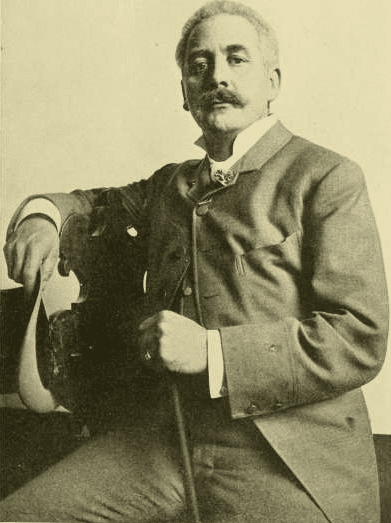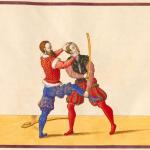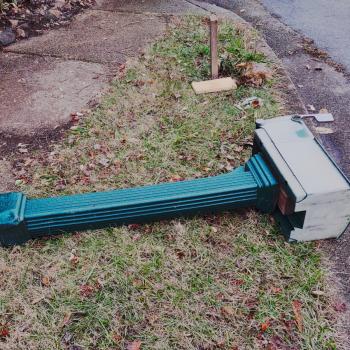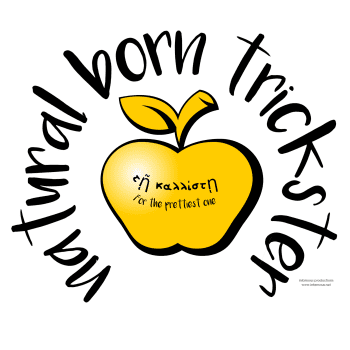I am generally of the opinion that monuments to the anti-American pro-slavery terrorist movement that called itself the “Confederate States of America” should be melted down and recycled into toilet seats.
But I am also generally of the opinion that it’s a bad idea to disturb anything in a graveyard, that the dead should be permitted to lie under the patina of history, with new context accumulating on top but without digging up the bones (literal or figurative) of the past. Cemeteries are liminal places loaded with magical energy, and should be treated carefully.
So I’m feeling conflicted about the removal of the Confederate memorial at Arlington National Cemetery and its planned relocation to the New Market Battlefield State Historical Park in Virginia. It seems a significantly different case than taking down a statue of some Confederate general in a park — especially as this statue serves as a marker for the grave of the sculptor, Moses Ezekiel.
In an illustration of the complexities involved, Ezekiel was both a Confederate veteran who fought for the regressive cause of slavery, and the first Jewish graduate of Virginia Military Institute and the first Jewish-American artist of international note, a notable bit of social progress in the 1860s.
Ezekiel created several Confederate statues, as well as one of Thomas Jefferson at the University of Virginia. The Jefferson statue was featured in world news in August 2017 when tiki-torch white supremacists rallied in Charlottesville, chanting “Jews will not replace us!”, unaware that the statute they gathered around was created by a Jewish sculptor.
History is full of ironies like this.
We need to put some historical context around the Confederate memorial. The National Cemetery was established in 1864, and while its original purpose was a cemetery for Union soldiers, some Confederate war dead were also among the initial burials. However, Major General Montgomery C. Meigs, who as Quartermaster General was in charge of the cemetery, strictly forbade any sort of decoration of the Confederate graves or the construction of any monument to Confederate dead. And for decades no new burials of Confederate soldiers (either reinterment of war dead, or burials of veterans who died after the war) were permitted.
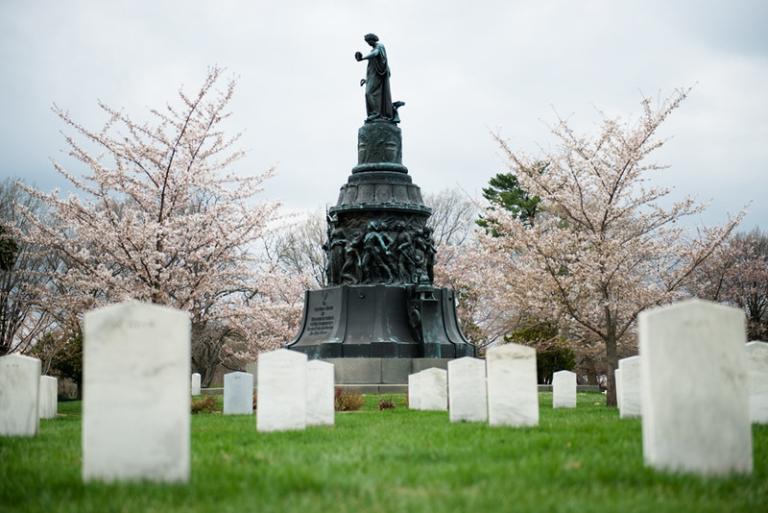
But in 1898, the Spanish–American War (truly a shameful bit of American imperialism — but we’ll leave that can of worms for another time) had soldiers from both northern and southern states fighting a foreign power in the first major war for the US since the Civil War.
In the wake of that war and of the 1898 insurrection in Wilmington, North Carolina (where white supremacists forced the city government to resign at gunpoint, expelled political leaders from the city, destroyed black-owned businesses, and killed scores of innocent people), President William McKinley made a tour of the South with an intention to promote both ratification of the Treaty of Paris and racial harmony.
But during that Southern tour, during a speech at the “Atlanta Peace Jubilee” (a celebration of US victory over Spain), McKinley announced that the federal government would now begin tending Confederate graves, saying that the Confederate dead represented “a tribute to American valor”.
Now, we must note that McKinley was not just a Republican when that implied support for progressive (relative to the times) ideas about race, but was a Civil War combat veteran. He certainly did not harbor Confederate sympathies.
But he prioritized ending sectionalism over civil rights. His speech set in motion a movement to go further than just tending Confederate graves, but to actually create a Confederate section at Arlington National Cemetery as a symbol of national reconciliation.
McKinley approved of the idea, and the reburials and landscaping of the section were completed by 1903. By this time, McKinley had been assassinated and succeeded by his young vice president Theodore Roosevelt — who was only a child during the Civil War, a significant generational shift.
With a Confederate section created, the idea of a memorial statue at its center flowed naturally. (Indeed one was likely intended all along, though the records aren’t clear.) Moses Ezekiel was ultimately given the commission in 1910. He was a true believer in the Confederate cause, who claimed that Robert E. Lee himself encouraged him to become a professional artist and told him that “[W]hatever you do, try to prove to the world that if we did not succeed in our struggle, we were worthy of success.”
Ezekiel was a leading creator of art promoting the grand myth of the “Lost Cause” of the Confederacy and the lie that Southern secession had been about state’s rights, not slavery.
Yet on the other hand, he was the first Jewish-American artist of international repute, and is remembered for creating the nation’s largest monument to religious liberty.
Ezekiel lived most of his life in Rome, including the years he worked on the Confederate memorial. Perhaps it’s easier to believe in a mythologized version of a place, even your birthplace, when you live on the other side of the world from it.
He died in his studio in 1917, and due to the World War I he was was temporarily entombed there. But in 1921 his remains were sent to Arlington, and he was reinterred at the foot of his Confederate Memorial, in the first burial ceremony ever held in the amphitheater at Arlington National Cemetery. Secretary of War John W. Weeks presided, and among the honors was a message from President Warren G. Harding in which he praised Ezekiel as “a great Virginian, a great artist, a great American, and a great citizen of world fame.”
Quite an honor for a man who had once taken up arms against the United States.
Ezekiel was entirely wrong about the Civil War, both in serving it in and in propagandizing the “Lost Cause” myth. But he was not, I think, an evil man, any more so than the great multitudes who have been fooled into fighting for bad causes over the course of human civilization. Disturbing his grave to make a political point seems improper.
The creation of the Confederate memorial was part of a process of symbolic reconciliation set in motion by William McKinley, a man who had been shot at by Confederate troops, the last President to serve in the Union Army — indeed the last President to even be an adult during the Civil War. His moral authority to declare an end to sectionalism was tremendous.
But McKinley promoted that cause at the expense of the civil rights of former slaves and their descendants. It’s relevant that the National Cemetery remained racially segregated until 1948. So it also seems improper to let a 1914 piece of Confederate apologetics stand answered.
The problem with the piece is not informational or educational; we can presume (at least for the sake of argument) that all but the dimmest contemporary viewer understands that slavery was an irredeemable institution, and that the Confederacy was a pro-slavery organization.
(If anyone drags out the myth about the Civil War being about state’s rights, give them a copy of Confederate Vice President Alexander Stephens’s “Cornerstone Speech”, where he plainly states that the Confederacy’s “cornerstone rests, upon the great truth that the negro is not equal to the white man; that slavery, subordination to the superior race, is his natural and moral condition.” Screw those guys.)
The problem here is symbolic. The whole purpose of the Confederate section and the memorial, after all, is symbolic. McKinley wanted to use the Confederate dead as a symbol of “American valor”. (Which, it seems, meant to him American imperialism.)
Ezekiel wanted to use the memorial as a symbol that the cause he and his comrades had fought for — that some of his friends had died for — was a worthy one. We can say that he was wrong in this, while still maintaining human sympathy for him.
We are in the realm of magic dealing with the dead, and should tread with care.
There is tremendous power in the graves of the war dead. Surely it would be best to direct that power intelligently, rather than leave it to flow randomly.
Years ago I got some excellent advice from noted witch Byron Ballard regarding ancestor work and the problematic dead. Her advice was that rather than trying to erase our troublemaking ancestors, we should turn to them first. She compared it to waking up Sunday morning after a drunken Saturday night, regretting one’s sins in the light of sobriety, and being motivated to make amends; just so, from their new perspective, the problematic dead have a clearer view than they did in life, perceive their wrongdoing, and have motive and means to make up for them by helping their descendants.
We do not need to believe in a supernatual afterlife to do ancestor work and profit from this advice; nor need we limit it to our biological ancestors.
Perhaps we can recognize that the Confederate dead were wrong, very wrong, in their cause; and also that in whatever sense they live on (whether as disembodied ectoplasm or as memory patterns in the brains of the living), they are better able to understand that now, and so we do not need to dishonor them to make the point.
So perhaps we could find a way to contextualize the memorial, add additional art and information to that section of the cemetery to reflect the improved understanding that we and the dead have, without destroying or taking away anything.


